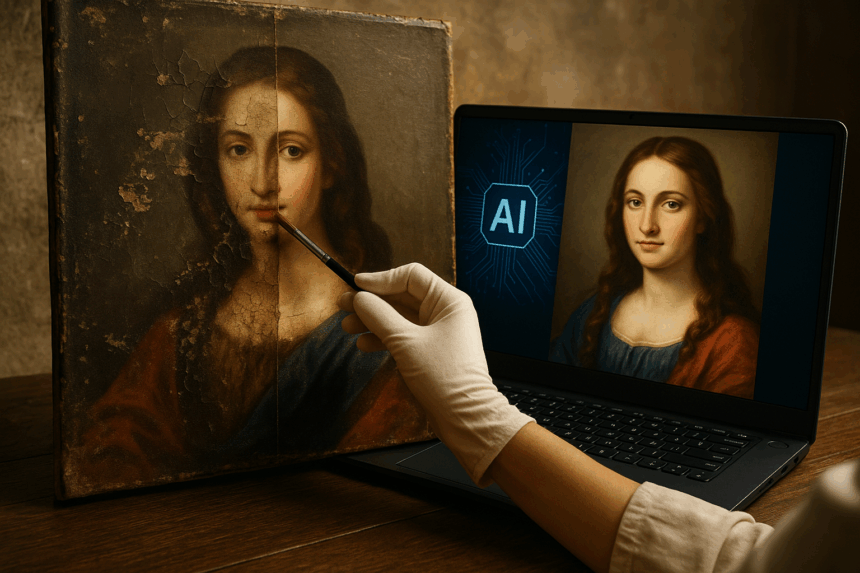Centuries of wear have left many old oil paintings cracked, faded, and lacking pigment. Traditional restoration can take years and often focuses solely on prized works. Now, researchers have developed an AI-powered technique that can digitally restore damaged paintings in just hours. This innovation could unlock access to countless artworks that have been previously hidden from public view.
What’s Happening & Why This Matters
Alex Kachkine, a graduate researcher at the Massachusetts Institute of Technology (MIT), has developed a new method that utilizes artificial intelligence and image editing to restore damaged paintings. The process starts with a detailed scan to map every crack, discoloration, and missing pigment. In one case, Kachkine analyzed a late 15th-century oil painting attributed to the Master of the Prado Adoration. The scan identified over 5,600 damaged sections needing restoration.
Next, Kachkine digitally reconstructs the painting in Adobe Photoshop, adding missing paint specks and matching colours to surrounding areas. Damaged patterns are corrected by copying intact sections elsewhere on the painting. In one impressive example, the missing face of an infant was restored using a copy from another artwork by the same artist.
The final digital mask contains more than 57,000 colours, printed onto a transparent polymer sheet. This sheet is varnished to prevent ink bleeding, then carefully laid on top of the painting. The technique preserves the original surface and can be reversed without damage by peeling or using solvents.
Kachkine estimated that traditional restoration would have taken about 200 hours. His AI method completes the task within hours, vastly accelerating the restoration process. He says, “There was a fair bit of relief that finally this method was able to reconstruct and stitch together the surviving parts of the painting.”
The innovation promises to restore many damaged but lesser-known paintings that are often stored away due to the high cost of traditional conservation.
However, ethical questions remain. Some worry that the polymer overlay could alter the viewer’s experience of the artwork. Others question whether copying elements from other works respects artistic integrity.
Professor Hartmut Kutzke from the University of Oslo’s Museum of Cultural History notes that the method offers faster and cheaper restoration, although it may be most suitable for lower-value works. He believes the technique could bring hidden artworks into public galleries, expanding access to cultural heritage.
TF Summary: What’s Next
AI-driven art restoration transforms how we preserve damaged paintings by speeding up and reducing restoration costs. Researchers at MIT have showcased a reversible polymer overlay technique that digitally repairs centuries-old damage in just hours.
While suited to lesser-known works for now, the approach opens new doors for museums to share their hidden art with a wider audience. Future research will weigh the quality of restoration and consider ethical implications regarding artwork authenticity and the viewer’s experience.
— Text-to-Speech (TTS) provided by gspeech


